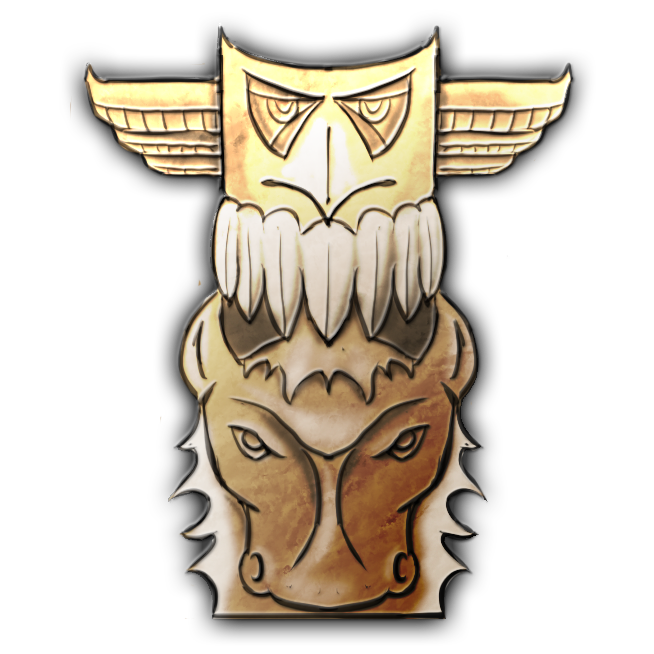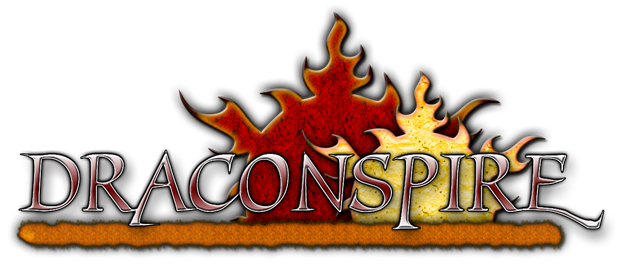

The tabled grasslands of High Dar rest at the southern end of Pax Thallos. An untamed land of powerful horse lords, nomadic gypsies and tribal druids, these lofty lands are surrounded by soaring granite cliffs.
The plateau of High Dar stretches over two hundred miles northeast from the Thunder Peak Mountains. Formed from an ancient lava flow and centuries of wind and erosion, these lands have become an isolated ecosystem unto themselves.
The northeast two thirds of High Dar consist of rolling grass lands, large granite boulders and natural cistern lakes. The southwest section is covered in temperate broadleaf forest and teems with small brooks fed by runoff from the nearby Thunder Peaks.
High Dar remains dry and warm throughout most of the year. A short wet season spanning from Songdrift to the Last Bloom brings in torrents of rain, causing the grasslands to spring into life, producing vast and vivid fields of wildflowers that stretch across High Dar’s entirety. Throughout the nearly indistinguishable summer and fall months the land is buffeted by strong winds from the warmer northern lands, spontaneous lightning storms and devastating tornados are not uncommon.
The unnamed forest region at the feet of the Thunder Peaks is a diverse and unique ecosystem consisting of monstrous insects, predatory cats, ettercaps, centaurs, goblins and worgs. To the people of these lands, the forest is a cursed and forbidden place. Those that venture into its leafy expanse speak of weathered marble ruins, fern choked sculptures and large alien bones the size of houses. It is well known that several large goblin tribes and settlements are entrenched deep within the woods, the descendants of the infamous chief Pebblenose that sacked the garrison of Cobblefield in 2002 CM.
The de facto capital of High Dar, Narefall, more suitably resembles a wandering caravan than a proper city. Several of its rolling wagons dwarf the tenements and castles of lowland kingdoms. The mobile city travels between several grazing and farming sites, taking shelter within a steep valley along the southeast shelf of the tablelands during the wet season.
People: Most Darians are from two major ethnic groups. The native Darians, called Keks, are a tribal people with olive skin, oval eyes and dark to light brown hair, comprised mainly of barbarians, druids, oracles, rangers and tradesmen. These people avoid large civilization and worship the elemental forces of wind, light and water that shape the land and lives of those that live upon High Dar. Keks are renowned horsemen and accomplished hunters, living in small nomadic villages that consist of yurts and portable thatch huts. These nomadic bands are often led by powerful druids or savage warriors. Keks are known throughout the world for their fabled destriers, horses that tower over lowland warhorses, renowned for their great intellect, strength and stamina. Keks traditionally dress in leathers adorned with bone or stone jewelry, sporting circular woven hats or small leather caps. Piercings and tattoos are common within Kek society, with many of its members stretching ear or nose piercings with bone plugs and displaying tribal tattoos across their chests, backs, arms or even face.
The second ethnic group, Olyn Folk, migrated to High Dar in 245 CM to escape religious extermination by the Temple of Dunes for their devotion to the Shattered Pantheon. These people display a more Thallan appearance with ebony skin, ringed black hair, dark brown eyes and tall stout builds. A jovial and nomadic people, Olyn Folk are well known for their superstitions, traditions, athletic ability and close knit society. Often called grassland gypsies Olyn Folk travel throughout High Dar in small caravans in search of new farming and grazing plats, never staying in one place for too long. Merchants of fabric, horseflesh and entertainment, the occasional Olyn caravan wanders into Castros or Pax Thallos to obtain goods not readily available on the tablelands. Olyn Folk dress to impress, sporting elaborate moustaches, flowing multi colored hemp or cotton garments and are almost always seen wearing a scarf or patched together cloak.
High Dar is an isolated region, with nearly 95% of its population being Keks or Olyn Folk. However, small pocket communities of sessul and hill dwarves can be found scattered throughout the tablelands.
Government and Alignment: (Tribal: CN;Kek, CG;Olyn Folk): Several ambitious Keks and Olyn Folk have attempted to unite High Dar over the ages with little success. A land rooted deeply in the traditions of freedom and tribal government, each small Kek settlement is generally ruled by a chief that pays homage to a gran’chief in return for protection and the right to graze their herds within the gran’chief’s realm known as a tract. Gran’chiefs lay claim to large swaths of land and allow for smaller tribes to occupy their territories, calling upon their subservient occupants in times of a Warmoot or in defense of their tract. Olyn Folk live in a complex matriarchal society, typically granting power to a council of female elders that administer judgments, set rules and oversee the welfare of their Folkholds. While not a society of written laws, Olyn Folk have an almost religious emphasis on tradition and superstition. Each Folkhold contains its own rules and taboos. The most commonly known and widely accepted of these include never pointing a finger at the sky, always covering ones neck while outdoors, not eating nuts and sleeping next to one another foot to head.
Major Settlements: While not a region of traditional cities or towns, the people of High Dar typically clutter in small mobile villages or caravans. The largest and most permanent settlement of High Dar is the Olyn Folk’s wagon city of Narefall that moves between a half dozen sites throughout the year. The people of Narefall settle within a valley to the southeast between the months of Songdrift and Last Bloom to take shelter from the regions harsh wet season. During this time the city of Narefall nearly triples in size, as smaller caravans join them to engage in short but productive trade sessions. To the west, the flat tablelands are divided into no less than twenty tracts ruled by gran’chiefs, throughout which countless Kek villages can be found. Narefall (Large City): Population 19,296.
Religion: Organized religion is almost unheard of within High Dar. No permanent temples dedicated to the Holy Five exist within its borders. Missionaries from the Five are often shunned or outcast. Likewise those devoted to the Sand God are often met with dismissive gestures or downright hostility from Olyn Folk. Nonetheless, the people of these lands are highly spiritual and religious in their own way. Keks pay devout homage to the elemental powers of wind, light and water that they refer to as the Allmass or Triad of Life. Totems are commonly erected across the grasslands to harness light like a calendar, produce music when interacting with wind or to collect rain water. These totems serve as markers for gran’chief’s tracts, reference points for gatherings or to mark trade routes and roadways.
Olyn Folk have an almost religious emphasis on taboos and superstition, but they also worship a wide spectrum of the “Old Gods”, known commonly as the Shattered Pantheon. Nearly every group of Olyn Folk has a cart temple dedicated to one or more of the fallen gods, and nearly every known god of the Shattered Pantheon has a cart temple located in Narefall.
Conflicts: Internal conflict is a daily struggle for those that call the grasslands of High Dar home. Each gran’chief strives to protect their tract against neighboring gran’chiefs, the Olyn Folk are always on the lookout for Kek warbands or goblin raiders, and the city of Narefall has survived several unsuccessful assaults over the past few years by ambitious Kek gan’chiefs. Darians nonetheless are a vigilant and hardy folk, with little worry in regards to the troubles of lowlanders.
Economy: The Darians do not have their own currency. A simple barter system is employed between the Keks, where residents often trade goods and services between each other for items that they cannot readily create themselves. The Olyn Folk employ a complex dickering system revolving around personal reputation credit for goods and services that can become quite elaborate, often including future promises. Occasionally Olyn caravans travel to nearby settlements in Pax Thallos or Castros to trade cotton, hemp, horseflesh or to perform entertainment in return for local coin which they immediately spend on items that have a high trade value to other Keks or Olyns such as horse shoes, metals, glass, oil and pottery.
Relationships: Darians relate easier to each other than to lowlanders. Due to their isolated location, they are often left to their own devices. Keks and Olyn Folk often regard each other with an unstable sense of distrust, keeping their two cultures separated but interacting for the most part peacefully. Keks can be known to hold bloodgrudges for generations between rival gran’chiefs, turmoil along tract borders is not uncommon, especially during the summer months as resources begin to dwindle. Occasionally a rogue gran’chief descends into the lowlands, striking out along the Ad’risean Waste or raiding into the Parish of Kedabus and northern Castros. These incursions are rare, and are often mistaken for common banditry.
